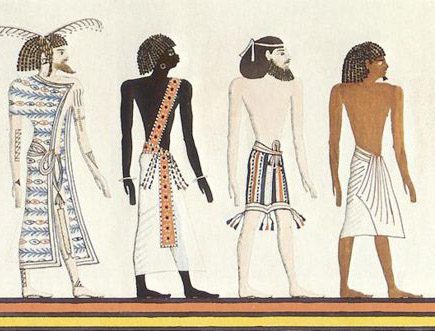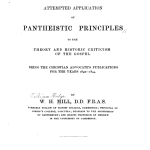
(Wikimedia Commons)
Three quick comments about Alma 3, the reading for today:
1.
This chapter raises the issue of dark skin color as a supposed sign of God’s curse. Which, for many critics, immediately brands the Book of Mormon as racist, and particularly as a product of nineteenth-century American racism.
We believers sometimes respond quite defensively to this charge. But there may be a middle ground:
Could ancient Nephites have been racists, by putatively enlightened twenty-first century standards?
Of course they could have. If Nephite culture wasn’t “racist,” it was probably the only ancient culture in world history that wasn’t. Probably, a few might tend to be believe, the only non-racist culture prior to the emergence of certain universities and upper-class urban areas of the American northeast during the Kennedy administration. Heck, some racial progressives in the United States continue to sniff out alleged racism virtually everywhere, even today.
Could that have left its mark on the text of the Book of Mormon?
Easily.
But that’s not the only relevant teaching of the Book of Mormon about race and prejudice.
As I’ve argued for years, the prophetic preaching of Samuel the Lamanite can be read, in part, as a polemic against assumptions of racial superiority. And 2 Nephi 26:33 seems to be an implicit response to racial prejudice: The Lord, says that passage, “inviteth them all to come unto him and partake of his goodness; and he denieth none that come unto him, black and white, bond and free, male and female; and he remembereth the heathen; and all are alike unto God, both Jew and Gentile.”
2.
Note that, although Alma 3 says that God placed a mark upon the Lamanites, it also suggests (in verse 9) that the curse was acquired and transmitted in the normal way that genetic traits are acquired and transmitted. My personal suspicion is that the distinct color of Lamanite skin came about through intermarriage with darker-skinned indigenous peoples, which the Nephites would surely (and reasonably) have viewed as a sign of indifference toward, and abandonment of, the Abrahamic covenant.
Compare verses 14-19, where the text seems to view the mark of the Amlicites as both God-imposed and self-imposed. These may simply be two different ways of viewing and interpreting the same thing, on the analogy of Alma 44:1-10, where Moroni explains Nephite military success in supernatural or religious terms while his opponent Zerahemnah quite plausibly explains it in completely naturalistic terms.
3.
Royal Skousen argues that the Book of Mormon’s Amlicites and Amalekites are the same group, with the variation in spelling being the result, merely, of dictation or scribal error:
https://onoma.lib.byu.edu/onoma/index.php/Amlicites_/_Amlikites_Variant










